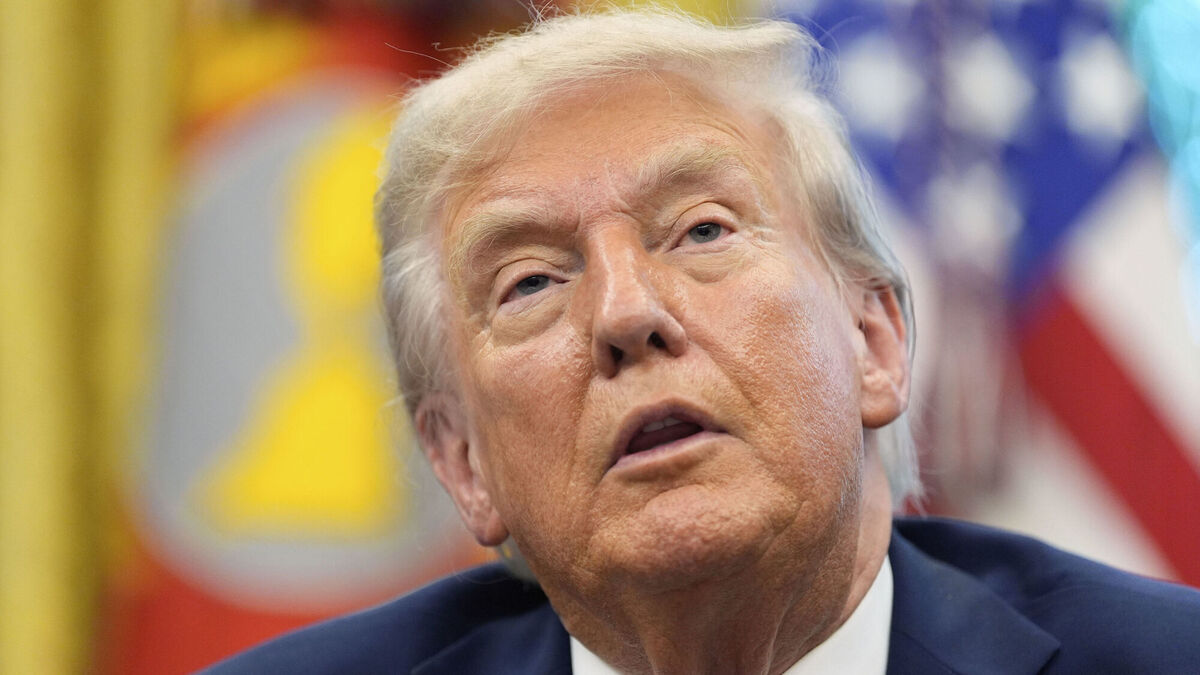PORTLAND, Ore. — Former President Donald Trump told reporters this week that he is considering sending federal troops to Portland, Oregon — apparently after being misled by a television segment that used years-old footage of the city’s mass protests to depict ongoing unrest today.
The remarks, which revived memories of Trump’s controversial deployment of federal officers to Portland in 2020, immediately drew pushback from state and local leaders, who insist that the city is not experiencing the kind of widespread upheaval Trump described.
Outdated Video Shapes Trump’s View
Speaking to reporters on Thursday, Trump claimed he had seen video of what he called “the destruction of the city.” He said Portland’s protests were “still going on” and described the city as “unbelievable, what’s going on there.”
Also Read
In reality, the protests Trump referred to ended years ago. The city was the site of near-nightly demonstrations in the summer of 2020 following the murder of George Floyd, which drew thousands of people downtown for more than 100 consecutive days. But since then, only small-scale demonstrations have occurred — typically involving a few dozen activists gathering outside a federal Immigration and Customs Enforcement (ICE) facility along the South Waterfront.
Trump’s confusion appears to stem from a Fox News broadcast on Thursday that spliced together footage of a recent protest with viral video from July 2020, in which Portland resident Christopher David was pepper-sprayed in the face by federal agents. The 2020 clip was incorrectly labeled as having been filmed in June 2025.
“I didn’t know that was continuing to go on,” Trump said. “This has been going on for years. We’ll be able to stop that very easily, but that was not on my list, Portland. When I watched television last night, this has been going on.”
A City Far from Trump’s Depiction
Trump went on to describe Portland as though it were still in chaos, claiming, “It’s like living in hell.” He suggested the city remained scarred by protests, despite the fact that the fences around the downtown federal courthouse have long been removed and the Portland Police Bureau’s headquarters no longer has boarded-up windows.
Local officials pushed back quickly.
“Like other mayors across the country, I have not asked for — and do not need — federal intervention,” said Portland Mayor Keith Wilson in a statement Friday. “We are proud that Portland police have successfully protected freedom of expression while addressing occasional violence and property destruction that takes place during protests at the ICE facility. Portland will continue to rise to the moment as a proud sanctuary city, taking legal action to stand up for our community and our rights.”
Recycling Old Conspiracy Theories
In his remarks, Trump also recycled a conspiracy theory his administration promoted during the 2020 protests: that demonstrators are “paid agitators” backed by radical groups.
“These are paid terrorists,” Trump said, adding that “well-printed protest signs” were proof of an organized, financed effort. “They get paid money by radical left groups … when we go there, if we go to Portland, we’re going to wipe them out. They’re going to be gone. They’ve ruined that city.”
There is no evidence supporting Trump’s claims. Independent investigations have repeatedly found that Portland’s protests were organized locally and largely driven by community activists.
Legal Pushback from Oregon Leaders
Oregon Attorney General Dan Rayfield vowed to resist any attempt by Trump to send troops into the state without authorization.
“Although some threats from the Trump administration may be new or surprising, this one is not: we’ve been preparing to respond since Trump returned to office,” Rayfield said. “California showed how effective our approach can be to stop federal overreach. Oregon is a safe place, and we intend to keep it that way. The president may have a lot of power, but he has to stay in his lane — and if he doesn’t, we’ll hold him accountable.”
Rayfield referenced California’s legal battles with the Trump administration during his first term, when federal efforts to override state immigration and environmental policies were blocked in court. Oregon, he suggested, would take a similar approach to any new overreach.
A Sharp Contrast to 2020
The situation today is far different from 2020, when Trump deployed federal agents to Portland over the objections of state and city leaders. That move escalated confrontations between protesters and law enforcement, with nightly clashes around the federal courthouse drawing international attention.
By contrast, recent Portland protests have been limited to small gatherings outside the ICE building. While demonstrators sometimes bring props — including a guillotine displayed earlier this summer — attendance has rarely exceeded a few dozen people.
Federal officers occasionally disperse the groups using chemical agents or crowd-control munitions, but police say these incidents have been isolated and manageable.
A Narrative Out of Sync with Reality
Trump’s latest comments illustrate how national narratives about Portland often diverge from on-the-ground reality. His description of a city “ruined” by ongoing unrest echoes rhetoric from 2020, when he repeatedly described Portland as a dangerous “anarchist jurisdiction.”
For Portland residents, however, the city’s challenges today center more on housing affordability, homelessness, and crime — not mass protests. Business owners and community leaders have sought to reframe the city’s image nationally, emphasizing its recovery from the tumult of 2020.
Federal-State Tensions Ahead
Whether Trump follows through on his threats remains uncertain. But his remarks have once again spotlighted tensions between federal power and local control — particularly in cities that serve as flashpoints in broader political battles.
For Oregon leaders, the message is clear: they are prepared to resist. “We’ve done this before, and we’re ready to do it again,” Rayfield said.
As Portland continues to move forward, the city finds itself once again caught between its own evolving reality and an outdated image projected onto the national stage.












